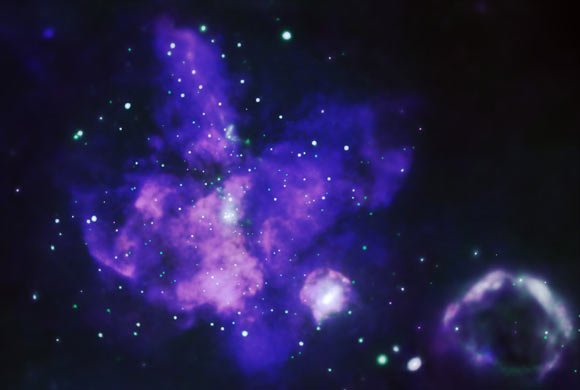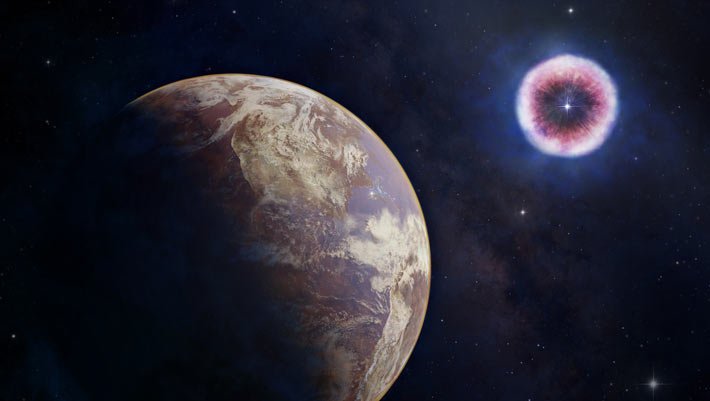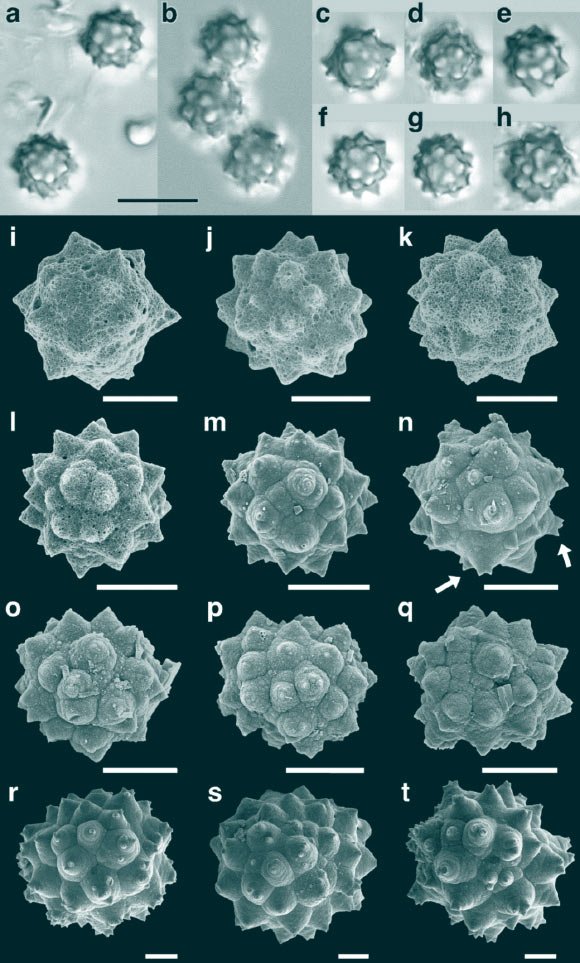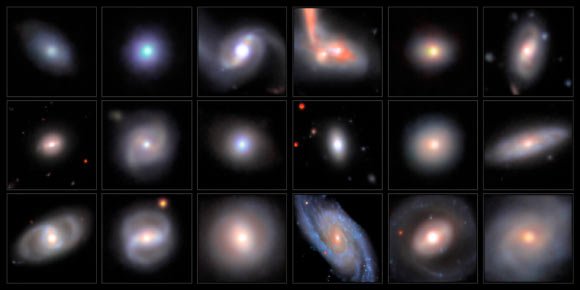The Tarantula Nebula is the most important star-forming complex in the Local Group of galaxies, which includes the Milky Way, the Large Magellanic Cloud, and the Andromeda galaxy. At its heart lies the exceptionally rich young stellar cluster R136, containing the most massive stars known. Stellar winds and supernovae have carved the Tarantula Nebula into an amazing display of arcs, pillars, and bubbles.

This Chandra image shows the Tarantula Nebula. Image credit: NASA / CXC / Penn State University / Townsley et al.
The Tarantula Nebula is located about 170,000 light-years away in the southern constellation of Dorado.
Also known as NGC 2070 or 30 Doradus, the nebula is part of the Large Magellanic Cloud.
“The Tarantula Nebula is the most powerful massive star-forming region in the Local Group of galaxies,” said California State Polytechnic University astronomer Matthew Povich and Pennsylvania State University astronomers Leisa Townsley and Patrick Broos.
“The nebula is unlike any massive star-forming region in our Milky Way Galaxy; with no differential galactic rotation to rip the complex apart, it persists and grows at the confluence of two supergiant shells that have provided it with the fuel to power massive star formation for at least 25 million years, reaching starburst proportions.”
“Today it is dominated by its 1-2-million-year-old central massive cluster R136, containing the richest young stellar population in the Local Group, including the most massive stars known.”
“Also in contrast to Galactic massive star-forming regions, the location of the Tarantula Nebula in the Large Magellanic Cloud offers us a nearly face-on, low-metallicity starburst laboratory with low intervening absorption and a well-known distance.”
The new X-ray image of the Tarantula Nebula includes the data from a large Chandra program that involved about 23 days of observing time, greatly exceeding the 1.3 days of observing that Chandra previously conducted on the nebula.
The 3,615 X-ray sources detected by Chandra include a mixture of massive stars, double-star systems, bright stars that are still in the process of forming, and much smaller clusters of young stars.
The authors also identified a candidate for the oldest X-ray pulsar detected to date in the Tarantula Nebula, PSR J0538-6902.
“There is a large quantity of diffuse, hot gas seen in X-rays, arising from different sources including the winds of massive stars and from the gas expelled by supernova explosions,” the astronomers said.
“This dataset will be the best available for the foreseeable future for studying diffuse X-ray emission in star-forming regions.”
The team’s paper will be published in the Astrophysical Journal Supplement Series.
_____
Leisa K. Townsley et al. 2025. The Tarantula — Revealed by X-rays (T-ReX). ApJS, in press; arXiv: 2403.16944











